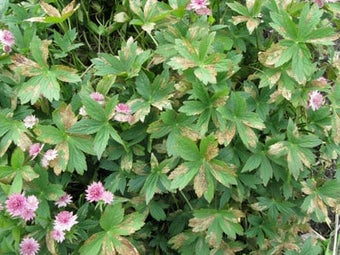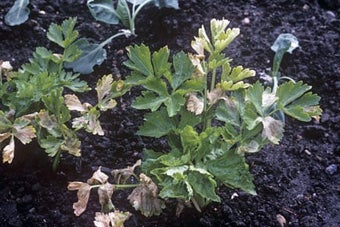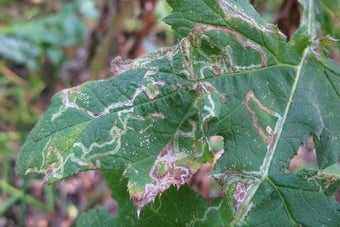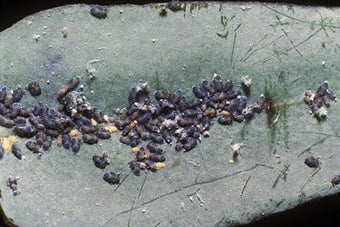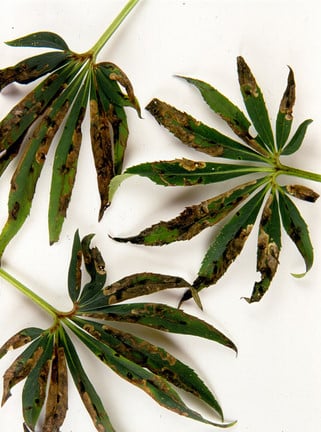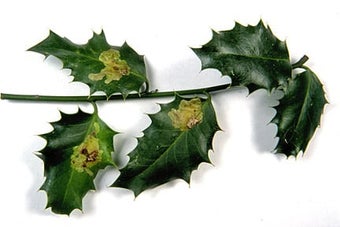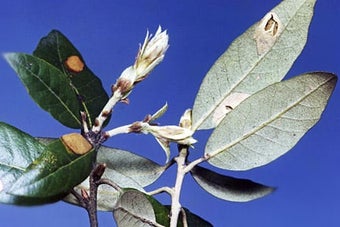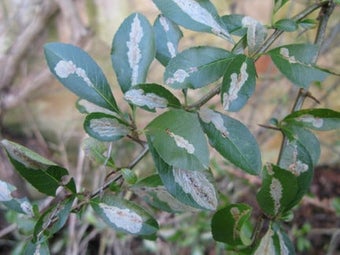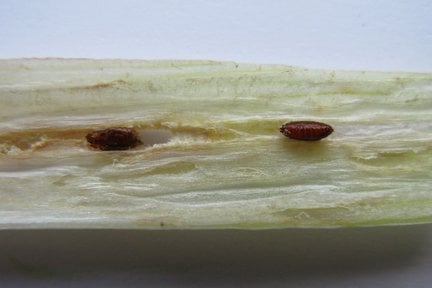
Quick facts
Common name - Allium leaf miner
Scientific name - Phytomyza gymnostoma
Plants affected - Leeks, onion, chives, shallot and garlic
Main symptoms - Lines of white mines on leaves, maggots or brown pupae in the stems and bulbs
Caused by - Maggots of a leaf mining fly
Timing - March-June and September-November
What is allium leaf miner?
Allium leaf miner can feed on leeks, onion, chives, shallots and garlic. The larvae feed within the leaves, the initial feeding damage can be followed by secondary rots making the crop inedible.
.
The fly belongs to the family Agromyzidae, there are several hundred known to occur in Britain and many are leaf miners as larvae. Most are a valuable part of and do not damage garden plants. More information on Agromyzidae is available from the Agromyzidae recording scheme.
Nearly 900 other insects, including some beetles, sawflies and moths create leaf mines as larvae more information about some for these insects can be found at The leaf and stem mines of British flies and other insects.
Symptoms
The adult fly can fly in from some distance:
- The greyish brown flies are 3 mm long and appear similar to many other species of true fly
- Before laying eggs, the female flies feed by making punctures in the leaves and sucking up the exuding
- This causes distinctive lines of white dots on the foliage
Next seen is damage from the maggots (larvae) and the pupae:
- The larvae are white, headless maggots without legs
- These tunnel within the foliage, stems and of their host plants
- Note: Similar damage is caused by caterpillars of the leek moth but that insect has creamy white larvae with brown heads and small legs
- The cylindrical brown pupae are about 3 mm long and found embedded in the stems and bulbs
- In spring presence of the fly larvae can cause twisting and distortion of the leaves this can be similar to distortion caused by changing weather conditions in the spring
The most obvious signs of this insect appear when rotting sets in, this is particularly prevalent in autumn:
- Plants affected by allium leaf miner or leek moth tend to rot due to secondary infections from fungi and bacteria that develop in the damaged tissues
Management
Plants can be effectively protected by covering them with an insect-proof mesh, at times when the adult flies are active and laying eggs. Peak adult activity is March to April and September to November. Crop rotation must be used, as adult flies might emerge from pupae underneath the covering if susceptible plants are grown in the same piece of ground in successive years.

Biology
Allium leaf miner has two generations a year:
- First generation female flies lay eggs on the stems or base of leaves during March and April
- The second generation repeats the process in late summer and autumn, this generation is usually the most damaging
The maggots bore into the foliage, stems or of their host plants and, after a couple of weeks, are fully grown and ready to turn into brown pupae. Pupation takes place mainly within the stems and bulbs during summer and winter but some pupae may end up in the soil, especially where plants have rotted off.






